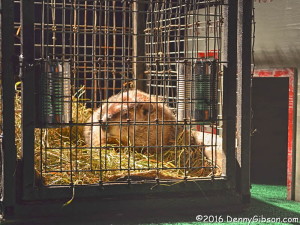 If I’d had any confidence that I would actually attend a Groundhog Day event this year, I might have posted a canned article last week and saved the Happy Imbolc piece for today to be fleshed out with the latest news. But the truth is that I wasn’t sure I would make it to Buckeye Chuck‘s dawn pronouncement until just minutes before I was on the way. I was noncommittal when I went to bed on Monday. If I woke up in time and in the mood to go, I would, but I set no alarm clock and told myself that sleeping through the whole thing would be just fine. I awoke at 4:04, four minutes past what I had decided was the ideal departure time. There was slack in that ideal time but I waffled for a few minutes before finally deciding to go. I hit the shower and then the road and reached Marion, Ohio, right about 7:00. The photo of Buckeye Chuck in his cage was taken at 7:03.
If I’d had any confidence that I would actually attend a Groundhog Day event this year, I might have posted a canned article last week and saved the Happy Imbolc piece for today to be fleshed out with the latest news. But the truth is that I wasn’t sure I would make it to Buckeye Chuck‘s dawn pronouncement until just minutes before I was on the way. I was noncommittal when I went to bed on Monday. If I woke up in time and in the mood to go, I would, but I set no alarm clock and told myself that sleeping through the whole thing would be just fine. I awoke at 4:04, four minutes past what I had decided was the ideal departure time. There was slack in that ideal time but I waffled for a few minutes before finally deciding to go. I hit the shower and then the road and reached Marion, Ohio, right about 7:00. The photo of Buckeye Chuck in his cage was taken at 7:03.
 The gathering in Marion isn’t nearly as large as the one in Punxsutawney but it is respectable. Radio station WMRN has been offering localized groundhog predictions since the late 1970s when Charlie Evers started sharing those provided by groundhogs in the neighboring woods with listeners. That led to a naming contest that produced the name Buckeye Chuck and Evers was instrumental in getting the Ohio legislature to proclaim Buckeye Chuck the state’s official groundhog in 1979. The original Buckeye Chuck was present today, patiently posing for photos. Evers has moved on but is still a force in the area with a show on radio station WWGH.
The gathering in Marion isn’t nearly as large as the one in Punxsutawney but it is respectable. Radio station WMRN has been offering localized groundhog predictions since the late 1970s when Charlie Evers started sharing those provided by groundhogs in the neighboring woods with listeners. That led to a naming contest that produced the name Buckeye Chuck and Evers was instrumental in getting the Ohio legislature to proclaim Buckeye Chuck the state’s official groundhog in 1979. The original Buckeye Chuck was present today, patiently posing for photos. Evers has moved on but is still a force in the area with a show on radio station WWGH.

 A WMRN Groundhog Day tradition is providing free ground hog, in the form of Spam sandwiches, to everyone present. That’s Buckeye Chuck’s current partner and translator, Scott Shawver taking the first bite of his. I had my own which I consumed with less ceremony but possibly more enthusiasm.
A WMRN Groundhog Day tradition is providing free ground hog, in the form of Spam sandwiches, to everyone present. That’s Buckeye Chuck’s current partner and translator, Scott Shawver taking the first bite of his. I had my own which I consumed with less ceremony but possibly more enthusiasm.

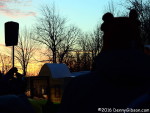 Broadcasting from the stage near Buckeye Chuck went live at 7:15, just a few minutes before Shawver bit into that sandwich. Sunrise was at 7:41. The time in between was filled with the reading of a couple of proclamations, including one from Marion Mayor Scott Schertzer and assorted banter from Shawver and co-host Paul James. When they began wondering about who had come the farthest, I thought I might be in the running but the first question, “Anyone from out of state?”, turned up a couple from New Jersey. They visit a different groundhog each year. Last year it was General Beauregard Lee near Atlanta, Georgia, and they have been to Punxsutawney, Pennsylvania “many times”. Clouds continued moving steadily on and by the time the sun popped over the horizon the sky was pretty much clear. Buckeye Chuck saw his shadow, an indicator that six more weeks of winter should be expected, instantly.
Broadcasting from the stage near Buckeye Chuck went live at 7:15, just a few minutes before Shawver bit into that sandwich. Sunrise was at 7:41. The time in between was filled with the reading of a couple of proclamations, including one from Marion Mayor Scott Schertzer and assorted banter from Shawver and co-host Paul James. When they began wondering about who had come the farthest, I thought I might be in the running but the first question, “Anyone from out of state?”, turned up a couple from New Jersey. They visit a different groundhog each year. Last year it was General Beauregard Lee near Atlanta, Georgia, and they have been to Punxsutawney, Pennsylvania “many times”. Clouds continued moving steadily on and by the time the sun popped over the horizon the sky was pretty much clear. Buckeye Chuck saw his shadow, an indicator that six more weeks of winter should be expected, instantly.
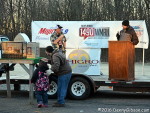 The mildly disappointed crowd dispersed rather quickly although some took advantage of the daylight to get a better view or a better picture of Buckeye Chuck while Shawver and James wrapped up the program. I dawdled a bit before walking to the car. Deciding to drive to Marion was as far as my morning planning had progressed. Just before climbing into the car, I asked the only person standing nearby if he knew of a good place for breakfast. “No,” he said with a laugh, “I’m from Cleveland.”
The mildly disappointed crowd dispersed rather quickly although some took advantage of the daylight to get a better view or a better picture of Buckeye Chuck while Shawver and James wrapped up the program. I dawdled a bit before walking to the car. Deciding to drive to Marion was as far as my morning planning had progressed. Just before climbing into the car, I asked the only person standing nearby if he knew of a good place for breakfast. “No,” he said with a laugh, “I’m from Cleveland.”
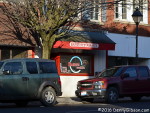 Scanning signs and storefronts as I drove back through Marion,I spotted a likely looking place near the center of town. I took the photo as I left. The street in front of Baires Restaurant was completely empty when I arrived. A guy at the counter and another in a booth were drinking coffee and chatting with each other when I entered. Service was somewhat slow but the lone woman on the business side of the counter seemed pretty busy in the cooking area so I didn’t think too much of it. The first person to enter after me was a fellow on a walker. As he worked his way into the seat next to me and against the wall, I asked, thinking it might be easier, if he would rather sit where I was. “This one’s got my name on it,” he laughed and he meant it. He pointed to a small brass plate on the back of the swivel stool marking it as his regular seat. The cook/waitress immediately appeared with his grapefruit which I had noticed her preparing earlier. My food arrived as I chatted with my new neighbor and learned that the restaurant normally opened at 8:30. It was not yet a quarter past when I entered and what I took to be slow service was more than I had a right to expect. Now that the place was officially open, a number of people entered with new folks greeted, usually by name, by those already there. As I paid my bill, I joked with the person I now realized was cook/waitress/owner about me busting in early and she grinned. “Oh, you’re alright.” In case there is any question, I had sausage & eggs.
Scanning signs and storefronts as I drove back through Marion,I spotted a likely looking place near the center of town. I took the photo as I left. The street in front of Baires Restaurant was completely empty when I arrived. A guy at the counter and another in a booth were drinking coffee and chatting with each other when I entered. Service was somewhat slow but the lone woman on the business side of the counter seemed pretty busy in the cooking area so I didn’t think too much of it. The first person to enter after me was a fellow on a walker. As he worked his way into the seat next to me and against the wall, I asked, thinking it might be easier, if he would rather sit where I was. “This one’s got my name on it,” he laughed and he meant it. He pointed to a small brass plate on the back of the swivel stool marking it as his regular seat. The cook/waitress immediately appeared with his grapefruit which I had noticed her preparing earlier. My food arrived as I chatted with my new neighbor and learned that the restaurant normally opened at 8:30. It was not yet a quarter past when I entered and what I took to be slow service was more than I had a right to expect. Now that the place was officially open, a number of people entered with new folks greeted, usually by name, by those already there. As I paid my bill, I joked with the person I now realized was cook/waitress/owner about me busting in early and she grinned. “Oh, you’re alright.” In case there is any question, I had sausage & eggs.

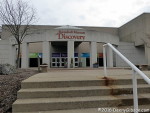 One of the reasons I had been so nonchalant about possibly sleeping through Buckeye Chuck’s emergence was that I had a Plan B. The day’s big event at Boonshoft Museum of Discovery, where I’d watched a groundhog named Rosie make her prediction in 2013, was aimed toward a much younger crowd and was scheduled for a comfortable 10:00 AM. I hadn’t even thought about it after starting toward Marion but I got curious as I was about to select “Home” on the GPS, and tapped Boonshoft instead. When I did, I realized that, without the breakfast stop, I probably could have worked in both Chuck and Rosie. Since it made the time to home only slightly longer, I proceeded to the museum. The last load of attending school children were about to climb aboard their bus when I arrived. Rosie’s appearance had taken place more than forty minutes earlier but I coud see the official result. She agreed with Chuck.
One of the reasons I had been so nonchalant about possibly sleeping through Buckeye Chuck’s emergence was that I had a Plan B. The day’s big event at Boonshoft Museum of Discovery, where I’d watched a groundhog named Rosie make her prediction in 2013, was aimed toward a much younger crowd and was scheduled for a comfortable 10:00 AM. I hadn’t even thought about it after starting toward Marion but I got curious as I was about to select “Home” on the GPS, and tapped Boonshoft instead. When I did, I realized that, without the breakfast stop, I probably could have worked in both Chuck and Rosie. Since it made the time to home only slightly longer, I proceeded to the museum. The last load of attending school children were about to climb aboard their bus when I arrived. Rosie’s appearance had taken place more than forty minutes earlier but I coud see the official result. She agreed with Chuck.
Not many did. Punxsutawney Phil predicted an early spring as did all the other U.S. groundhogs on my short list consisting of Staten Island’s Charles G. Hogg, Illinois’ Woodstock Willie, and Georgia’s General Beauregard Lee. The only groundhog of note that I found agreeing with Chuck and Rosie lives in Canada but not all Canadians are of the same mind, either. In Ontario, Wiarton Willie sided with the Ohio rodents in predicting more winter while Shubenacadie Sam claims an early spring is on the way in Nova Scotia.
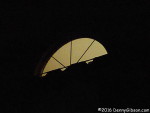 As stated in last week’s post, I had no plans to be awake at 4:30 AM Thursday. That was when Imbolc, the midpoint between Winter Solstice and Vernal Equinox, occurred this year. Neither did I have plans to assure that I was asleep at that time but that seemed the most likely and it is indeed what transpired. I didn’t miss it by too much, though. The picture at left was taken at 5:22, a mere fifty-two minutes past Imbolc. Admitedly I can’t prove it but I strongly suspect that the view from my bed was pretty much the same at the magic moment as it was less than an hour later.
As stated in last week’s post, I had no plans to be awake at 4:30 AM Thursday. That was when Imbolc, the midpoint between Winter Solstice and Vernal Equinox, occurred this year. Neither did I have plans to assure that I was asleep at that time but that seemed the most likely and it is indeed what transpired. I didn’t miss it by too much, though. The picture at left was taken at 5:22, a mere fifty-two minutes past Imbolc. Admitedly I can’t prove it but I strongly suspect that the view from my bed was pretty much the same at the magic moment as it was less than an hour later.
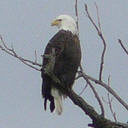 This picture is from my 2008 Sweetheart Cruise trip. This was my first time joining the annual (weather and other stuff permitting) cruise organized by a small group of Missouri road fans. The name comes from its proximity to Valentines Day and the fact that it usually includes sweethearts Kent and Mary Sue Sanderson. This particular cruise ran north along the Mississippi River from St. Louis to Hannibal then crossed over and returned through Illinois at some distance from the river. There were lots of bald eagles and pelicans to be seen on the way to Hannibal with the area around Lock 25 near Winfield, MO, where the picture was taken, being one of the hot spots. The second day featured some Sanderson childhood memories including a look (from the outside) at the Lustron house that Mary Sue remembered her father assembling after it arrived on a truck. Weather was fine for the two days of the actual cruise but I did encounter snow on the way home which prompted me to move from two-lane to expressway much sooner than planned.
This picture is from my 2008 Sweetheart Cruise trip. This was my first time joining the annual (weather and other stuff permitting) cruise organized by a small group of Missouri road fans. The name comes from its proximity to Valentines Day and the fact that it usually includes sweethearts Kent and Mary Sue Sanderson. This particular cruise ran north along the Mississippi River from St. Louis to Hannibal then crossed over and returned through Illinois at some distance from the river. There were lots of bald eagles and pelicans to be seen on the way to Hannibal with the area around Lock 25 near Winfield, MO, where the picture was taken, being one of the hot spots. The second day featured some Sanderson childhood memories including a look (from the outside) at the Lustron house that Mary Sue remembered her father assembling after it arrived on a truck. Weather was fine for the two days of the actual cruise but I did encounter snow on the way home which prompted me to move from two-lane to expressway much sooner than planned.
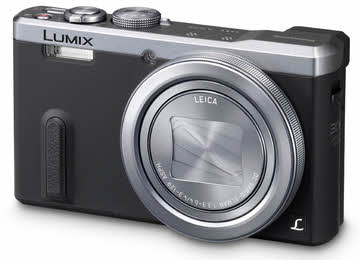 I knew within a week of purchasing the Panasonic DMC-FZ70 that I’d made a mistake. When the camera was not quite six days old I set out on a short road trip and used it for several of the pictures posted in that trip’s journal (
I knew within a week of purchasing the Panasonic DMC-FZ70 that I’d made a mistake. When the camera was not quite six days old I set out on a short road trip and used it for several of the pictures posted in that trip’s journal ( This is the right camera. It’s about three times as thick as my Samsung Galaxy S4 and actually smaller in the other dimensions. Equally important to me is the eye-level viewfinder. It is electronic, of course, which means its on the course side and a little sluggish but not terribly so. In terms of speed, it’s probably a little slower than the FZ70 but significantly faster than the FZ8 and FZ5 I used for years. Yes, I would like the better low light performance of the ZS50 or ZS100 but the difference in prices makes this the right camera for me for now.
This is the right camera. It’s about three times as thick as my Samsung Galaxy S4 and actually smaller in the other dimensions. Equally important to me is the eye-level viewfinder. It is electronic, of course, which means its on the course side and a little sluggish but not terribly so. In terms of speed, it’s probably a little slower than the FZ70 but significantly faster than the FZ8 and FZ5 I used for years. Yes, I would like the better low light performance of the ZS50 or ZS100 but the difference in prices makes this the right camera for me for now.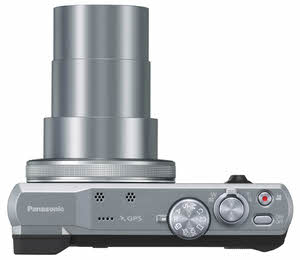 When I purchased that Lumix DMC-FZ5 in 2005 it was a real change for me. To that point I had refused to own a camera, or much of anything else, that used proprietary batteries. I had also stuck with products from “camera companies”. During the previous forty-plus years of semi-serious picture taking I’d owned Olympus, Nikon, and Canon cameras. Even my 100% price driven first digital was from a company, Agfa, known for film and cameras. My concerns were considerably lessened by the Leica lens on the FZ5. As I said in the FZ5’s My Gear post, digital cameras are “made of electronics and optics” and those are fields where Panasonic and Leica excel. The FZ8 also had a Leica lens but not so the FZ70. I can’t prove that my perception of the Lumix Vario lens on the FZ70 being slightly inferior as anything more than my own prejudice but the ZS40 makes the question meaningless. My latest purchase has a Leica 30X (24-720mm) lens that somehow fits itself inside that 1.34 inch body when power is off.
When I purchased that Lumix DMC-FZ5 in 2005 it was a real change for me. To that point I had refused to own a camera, or much of anything else, that used proprietary batteries. I had also stuck with products from “camera companies”. During the previous forty-plus years of semi-serious picture taking I’d owned Olympus, Nikon, and Canon cameras. Even my 100% price driven first digital was from a company, Agfa, known for film and cameras. My concerns were considerably lessened by the Leica lens on the FZ5. As I said in the FZ5’s My Gear post, digital cameras are “made of electronics and optics” and those are fields where Panasonic and Leica excel. The FZ8 also had a Leica lens but not so the FZ70. I can’t prove that my perception of the Lumix Vario lens on the FZ70 being slightly inferior as anything more than my own prejudice but the ZS40 makes the question meaningless. My latest purchase has a Leica 30X (24-720mm) lens that somehow fits itself inside that 1.34 inch body when power is off.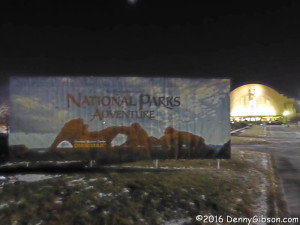
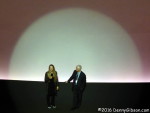
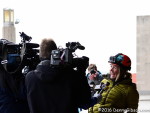
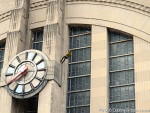
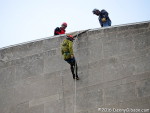
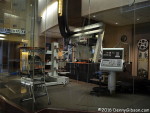
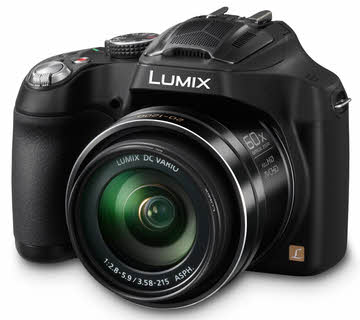 My gear had been stable for quite some time. The most recent newcomer was a Garmin zūmo 220 in January of 2012 and the newest camera a Nikon D5100 acquired the preceding September. The way the image capturing devices in the lineup were used had developed into something a little different than what I originally anticipated but it was all good. The D5100 is small for a DSLR but it’s still pretty big. When I’m carrying it my primary intent is, more likely than not, to take pictures. On the other end of things, my mobile phone is almost always with me and can be used when I’m not planning to take pictures but an opportunity — or need — appears. In between was a
My gear had been stable for quite some time. The most recent newcomer was a Garmin zūmo 220 in January of 2012 and the newest camera a Nikon D5100 acquired the preceding September. The way the image capturing devices in the lineup were used had developed into something a little different than what I originally anticipated but it was all good. The D5100 is small for a DSLR but it’s still pretty big. When I’m carrying it my primary intent is, more likely than not, to take pictures. On the other end of things, my mobile phone is almost always with me and can be used when I’m not planning to take pictures but an opportunity — or need — appears. In between was a 









